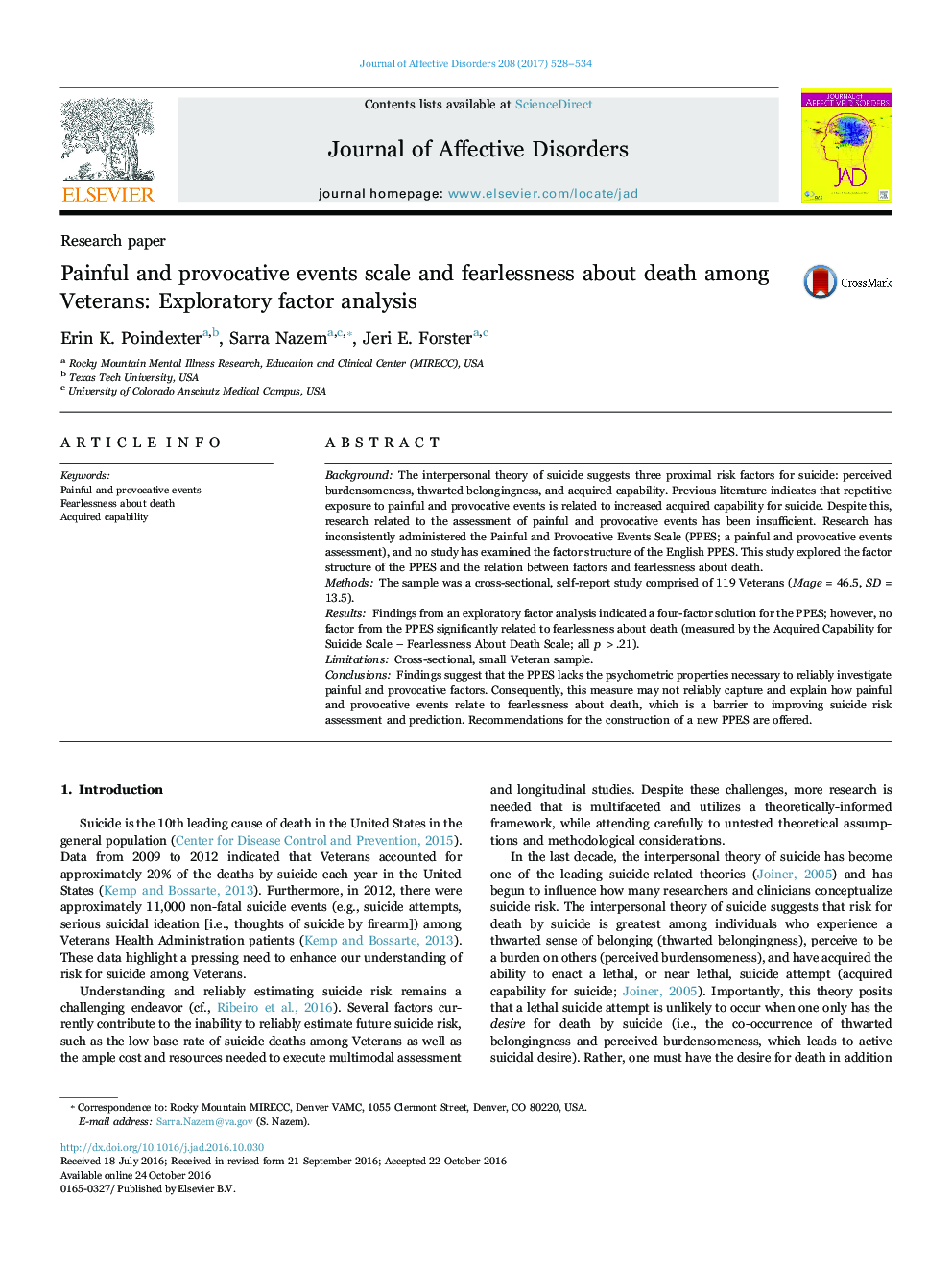| Article ID | Journal | Published Year | Pages | File Type |
|---|---|---|---|---|
| 5722123 | Journal of Affective Disorders | 2017 | 7 Pages |
â¢Painful and provocative events are associated with increased risk for suicide.â¢No study has examined the factor structure of the English PPES in Veterans.â¢Results suggest that assessment of painful and provocative events is inadequate.â¢Recommendations for an assessment reconceptualization are provided.
BackgroundThe interpersonal theory of suicide suggests three proximal risk factors for suicide: perceived burdensomeness, thwarted belongingness, and acquired capability. Previous literature indicates that repetitive exposure to painful and provocative events is related to increased acquired capability for suicide. Despite this, research related to the assessment of painful and provocative events has been insufficient. Research has inconsistently administered the Painful and Provocative Events Scale (PPES; a painful and provocative events assessment), and no study has examined the factor structure of the English PPES. This study explored the factor structure of the PPES and the relation between factors and fearlessness about death.MethodsThe sample was a cross-sectional, self-report study comprised of 119 Veterans (Mage = 46.5, SD = 13.5).ResultsFindings from an exploratory factor analysis indicated a four-factor solution for the PPES; however, no factor from the PPES significantly related to fearlessness about death (measured by the Acquired Capability for Suicide Scale - Fearlessness About Death Scale; all p >.21).LimitationsCross-sectional, small Veteran sample.ConclusionsFindings suggest that the PPES lacks the psychometric properties necessary to reliably investigate painful and provocative factors. Consequently, this measure may not reliably capture and explain how painful and provocative events relate to fearlessness about death, which is a barrier to improving suicide risk assessment and prediction. Recommendations for the construction of a new PPES are offered.
